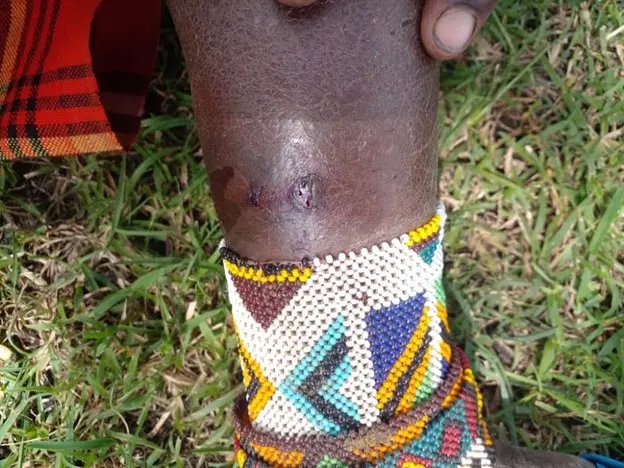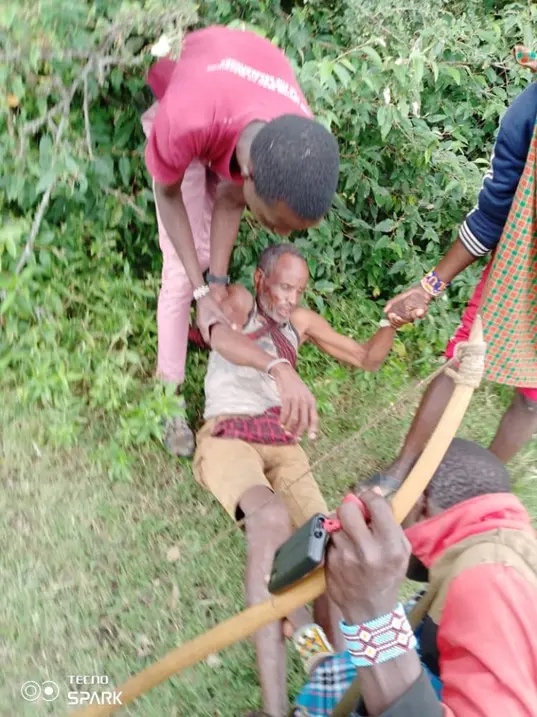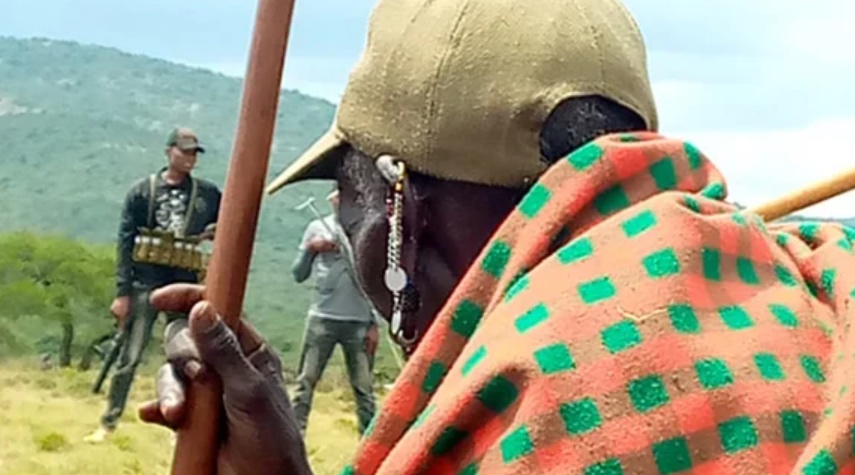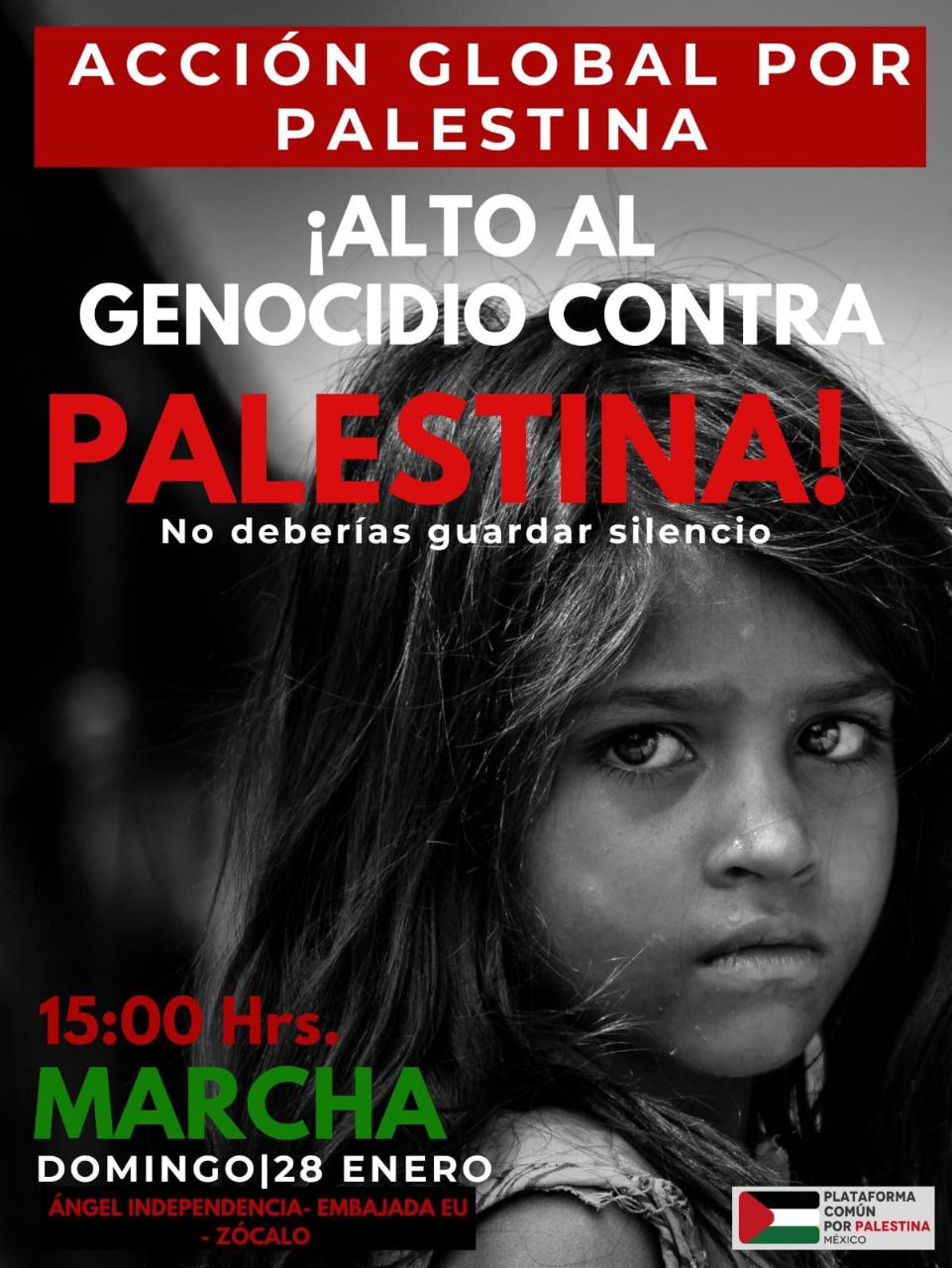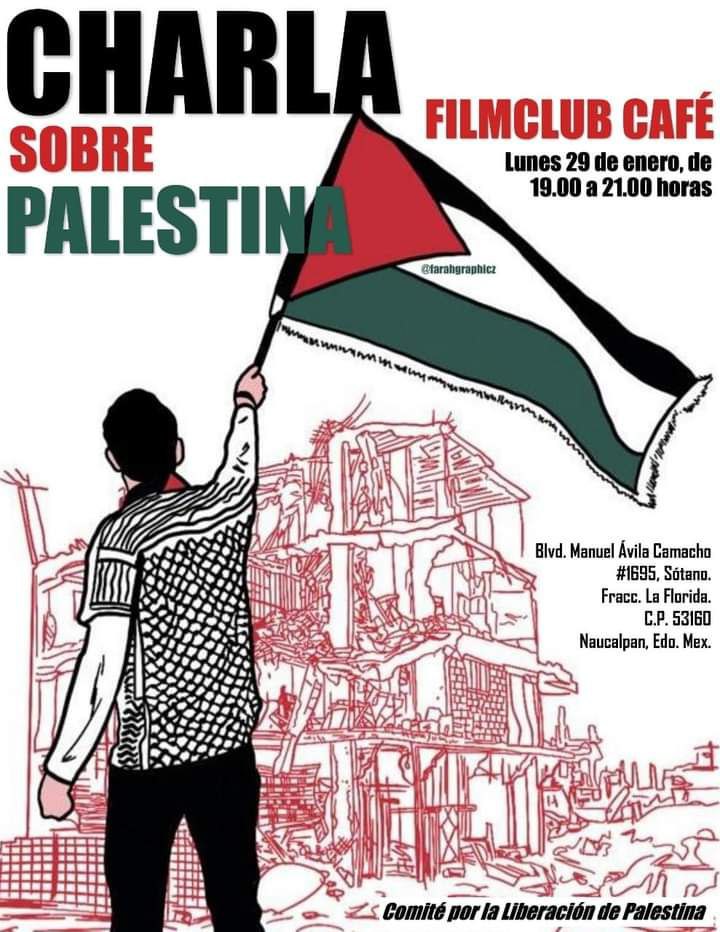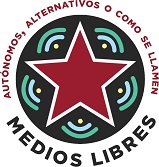
World
(Español) Alarma por violaciones sexuales del ejército de Israel a mujeres y niñas de Palestina
Fuente: Avispa Midia
Por Sare Frabes
Expertos de la Organización de las Naciones Unidas (ONU) expresaron hoy su alarma por denuncias de atroces violaciones de derechos humanos contra mujeres y niñas palestinas en la Franja de Gaza y Cisjordania. Las acciones van desde detenciones y ejecuciones arbitrarias, así como violaciones sexuales.
“Estamos consternados por los informes que hablan de ataques deliberados y ejecuciones extrajudiciales de mujeres y niños palestinos en lugares donde buscaban refugio o mientras huían”, puntualizan los expertos de las Naciones Unidas, quienes forman parte de lo que se conoce como Procedimientos Especiales del Consejo de Derechos Humanos, el mayor órgano de expertos independientes del sistema de derechos humanos de la ONU.
Entre las detenidas incluyen a defensoras de los derechos humanos, periodistas y trabajadoras humanitarias. De acuerdo con los informes que ha recibido la ONU, algunas de las detenidas “sostenían trozos de tela blanca cuando fueron asesinadas por el ejército israelí o fuerzas afiliadas”.
De acuerdo con la ONU, las detenciones comenzaron desde el 7 de octubre del 2023, sometiendo a las detenidas a tratos inhumanos y degradantes, negándoles compresas para la menstruación, alimentos y medicamentos. Además de ello, han recibido fuertes palizas. “Al menos en una ocasión, las mujeres palestinas detenidas en Gaza fueron supuestamente mantenidas en una jaula bajo la lluvia y el frío, sin comida”, agregan los expertos.
Los miembros de la ONU han alertado que en los informes que han recibido hay registros de mujeres y niñas que, “han sido objeto de múltiples formas de agresión sexual, como ser desnudadas y registradas por hombres del ejército israelí. Al menos dos detenidas palestinas habrían sido violadas, mientras que otras habrían recibido amenazas de violación y violencia sexual”, señalaron los expertos.
Te puede interesar – Ejército israelí detiene a la activista Ahed Tamimi, icono de la resistencia palestina
También han destacado que el ejército israelí tomó fotos de mujeres detenidas en circunstancias degradantes y las subió a Internet.Los expertos exigen una investigación independiente y rápida, y que Israel coopere con dichas investigaciones, recordando su obligación de proteger los derechos de las mujeres y niñas palestinas.
(Español) La apelación final de Julian Assange
Julian Assange presentará esta semana su último recurso ante los tribunales británicos para evitar la extradición. Si es extraditado, significará el fin de las investigaciones sobre el funcionamiento interno del poder por parte de la prensa.
Assange – por Mr. Fish
LONDRES – Si a Julian Assange se le niega el permiso para apelar su extradición a Estados Unidos ante un panel de dos jueces del Tribunal Superior de Londres esta semana, no le quedará ningún recurso dentro del sistema legal británico. Sus abogados pueden solicitar al Tribunal Europeo de Derechos Humanos (TEDH) una suspensión de la ejecución en virtud de la Regla 39, que se concede en “circunstancias excepcionales” y “sólo cuando existe un riesgo inminente de daño irreparable”. Pero no es nada seguro que el tribunal británico esté de acuerdo. Puede ordenar la extradición inmediata de Julian antes de una instrucción de la Regla 39 o puede decidir ignorar una solicitud del TEDH para permitir que el tribunal escuche su caso.
La persecución de casi 15 años de Julian, que ha cobrado un alto precio en su salud física y psicológica, se realiza en nombre de la extradición a los Estados Unidos, donde sería juzgado por presuntamente violar 17 cargos de la Ley de Espionaje de 1917. con una pena potencial de 170 años.
El “crimen” de Julian es que publicó documentos clasificados, mensajes internos, informes y videos del gobierno y el ejército de Estados Unidos en 2010, que fueron proporcionados por la denunciante del ejército estadounidense Chelsea Manning. Este vasto tesoro de material reveló masacres de civiles, torturas, asesinatos, la lista de detenidos en la Bahía de Guantánamo y las condiciones a las que fueron sometidos, así como las Reglas de Enfrentamiento en Irak. Quienes perpetraron estos crímenes –incluidos los pilotos de helicópteros estadounidenses que mataron a tiros a dos periodistas de Reuters y a otros 10 civiles e hirieron gravemente a dos niños, todos capturados en el vídeo de Asesinato Colateral– nunca han sido procesados.
Julian expuso lo que el imperio estadounidense busca borrar de la historia.
La persecución de Julián es un mensaje siniestro para el resto de nosotros. Desafía al imperio estadounidense, expone sus crímenes y, sin importar quién seas, sin importar de qué país vengas, sin importar dónde vivas, serás perseguido y llevado a Estados Unidos para pasar el resto de tu vida en uno de los sistemas penitenciarios más duros del mundo. Si Julián es declarado culpable, significará la muerte del periodismo de investigación en el funcionamiento interno del poder estatal. Poseer, y mucho menos publicar, material clasificado (como hice yo cuando era reportero del New York Times) será criminalizado. Y ese es el punto, como lo entendieron The New York Times, Der Spiegel, Le Monde, El País y The Guardian, quienes emitieron una carta conjunta pidiendo a Estados Unidos que retirara los cargos en su contra.
El primer ministro australiano, Anthony Albanese, y otros legisladores federales votaron el jueves a favor de que Estados Unidos y Gran Bretaña pusieran fin al encarcelamiento de Julian, señalando que se debía a que él “hacía su trabajo como periodista” para revelar “evidencias de mala conducta por parte de Estados Unidos”.
El caso legal contra Julian, que he cubierto desde el principio y que cubriré nuevamente en Londres esta semana, tiene una extraña cualidad de Alicia en el país de las maravillas, donde jueces y abogados hablan en tonos solemnes sobre la ley y la justicia mientras se burlan del principios más básicos de las libertades civiles y la jurisprudencia.
¿Cómo pueden avanzar las audiencias cuando la firma de seguridad española en la Embajada de Ecuador, UC Global, donde Julián buscó refugio durante siete años, proporcionó vigilancia en video de las reuniones entre Julián y sus abogados a la CIA, destripando el privilegio abogado-cliente? Esto por sí solo debería haber hecho que el caso fuera desestimado por los tribunales.
¿Cómo puede el gobierno ecuatoriano encabezado por Lenin Moreno violar el derecho internacional al rescindir el estatus de asilo de Julián y permitir que la Policía Metropolitana de Londres ingrese a la Embajada de Ecuador (territorio soberano de Ecuador) para llevar a Julián a una camioneta policial que lo espera?
¿Por qué los tribunales aceptaron la acusación de la fiscalía de que Julián no es un periodista legítimo?
¿Por qué Estados Unidos y Gran Bretaña ignoraron el artículo 4 de su Tratado de Extradición que prohíbe la extradición por delitos políticos?
¿Cómo se permite que siga adelante el caso contra Julian después de que el testigo clave de Estados Unidos, Sigurdur Thordarson, un estafador y pedófilo convicto, admitiera haber inventado las acusaciones que hizo contra Julian?
¿Cómo se puede acusar a Julian, un ciudadano australiano, en virtud de la Ley de Espionaje de Estados Unidos cuando no participó en espionaje y no se encontraba en Estados Unidos cuando recibió los documentos filtrados?
¿Por qué los tribunales británicos permiten que Julián sea extraditado a Estados Unidos cuando la CIA (además de poner a Julián bajo vigilancia digital y por video las 24 horas mientras estaba en la Embajada de Ecuador) consideró secuestrarlo y asesinarlo, planes que incluían un posible tiroteo? en las calles de Londres con la participación de la Policía Metropolitana?
¿Cómo se puede condenar a Julian como editor cuando, como hizo Daniel Ellsberg, no obtuvo ni filtró los documentos clasificados que publicó?
¿Por qué el gobierno de Estados Unidos no acusa de espionaje al editor de The New York Times o The Guardian por publicar el mismo material filtrado en asociación con WikiLeaks?
¿Por qué Julián está recluido en aislamiento en una prisión de alta seguridad sin juicio durante casi cinco años cuando su única violación técnica de la ley es violar las condiciones de la libertad bajo fianza cuando solicitó asilo en la Embajada de Ecuador? Normalmente esto conllevaría una multa.
¿Por qué se le negó la libertad bajo fianza después de que lo enviaron a la Prisión de Belmarsh?
Si extraditan a Julián, su linchamiento judicial empeorará. Su defensa se verá obstaculizada por las leyes antiterroristas estadounidenses, incluida la Ley de Espionaje y las Medidas Administrativas Especiales (SAM). Se le seguirá impidiendo hablar en público (salvo en raras ocasiones) y se le seguirá liberando bajo fianza. Será juzgado en el Tribunal de Distrito de Estados Unidos para el Distrito Este de Virginia, donde el gobierno estadounidense ha ganado la mayoría de los casos de espionaje. El hecho de que el jurado esté formado en gran medida por personas que trabajan o tienen amigos y familiares que trabajan para la CIA y otras agencias de seguridad nacional con sede no lejos del tribunal, sin duda contribuye a esta serie de decisiones judiciales.
Los tribunales británicos, desde el principio, han hecho que el caso sea notoriamente difícil de cubrir, limitando severamente los asientos en la sala, proporcionando enlaces de video que han sido defectuosos y, en el caso de la audiencia de esta semana, prohibiendo a cualquier persona fuera de Inglaterra y Gales, incluidos los periodistas que habían cubierto previamente las audiencias, acceder a un enlace a lo que se supone que son procedimientos públicos.
Como es habitual, no se nos informa sobre horarios ni horarios. ¿El tribunal emitirá una decisión al final de la audiencia de dos días el 20 y 21 de febrero? ¿O esperará semanas, incluso meses, para emitir un fallo como lo ha hecho anteriormente? ¿Permitirá que el TEDH conozca el caso o enviará inmediatamente a Julian a Estados Unidos? Tengo mis dudas sobre que el Tribunal Superior pase el caso al TEDH, dado que el brazo parlamentario del Consejo de Europa, que creó el TEDH, junto con su Comisario para los Derechos Humanos, se oponen a la “detención, extradición y procesamiento” de Julian porque representa “un precedente peligroso para los periodistas”. ¿El tribunal honrará la solicitud de Julian de estar presente en la audiencia, o se verá obligado a permanecer en la prisión de alta seguridad de Belmarsh en Thamesmead, al sureste de Londres, como también ha sucedido antes? Nadie es capaz de decírnoslo.
Julian se salvó de la extradición en enero de 2021 cuando la jueza de distrito Vanessa Baraitser del Tribunal de Magistrados de Westminster se negó a autorizar la solicitud de extradición. En su fallo de 132 páginas, encontró que existía un “riesgo sustancial” de que Julian se suicidara debido a la gravedad de las condiciones que soportaría en el sistema penitenciario estadounidense. Pero este era un hilo delgado. El juez aceptó todos los cargos presentados por Estados Unidos contra Julian como presentados de buena fe. Rechazó los argumentos de que su caso tenía motivaciones políticas, que no obtendría un juicio justo en Estados Unidos y que su procesamiento es un asalto a la libertad de prensa.
La decisión de Baraitser fue revocada después de que el gobierno de Estados Unidos apeló ante el Tribunal Superior de Londres. Aunque el Tribunal Superior aceptó las conclusiones de Baraitser sobre el “riesgo sustancial” de suicidio de Julian si fuera sometido a ciertas condiciones dentro de una prisión estadounidense, también aceptó cuatro garantías en la Nota Diplomática estadounidense núm. 74, presentada ante el tribunal en febrero de 2021, en la que prometía que Julián sería tratado bien.
El gobierno de Estados Unidos afirmó en la nota diplomática que sus garantías “responden enteramente a las preocupaciones que llevaron al juez [del tribunal inferior] a despedir al señor Assange”. Las “garantías” establecen que Julián no estará sujeto a misiles antiaéreos. Prometen que Julian, ciudadano australiano, podrá cumplir su condena en Australia si el gobierno australiano solicita su extradición. Prometen que recibirá atención clínica y psicológica adecuada. Prometen que, antes y después del juicio, Julian no estará recluido en el Centro Administrativo Máximo (CAM) en Florence, Colorado.
Suena tranquilizador. Pero es parte de la cínica pantomima judicial que caracteriza la persecución de Julián.
Nadie permanece detenido antes del juicio en el CAM de Florence. El Centro Administrativo Máximo de Florence tampoco es la única prisión de máxima seguridad en los Estados Unidos. donde Julian puede ser encarcelado. Podría ser ubicado en una de nuestras otras instalaciones similares a Guantánamo en una Unidad de Gestión de Comunicaciones (CMU). Las CMU son unidades altamente restrictivas que replican el aislamiento casi total impuesto por los SAM. Las “garantías” no son jurídicamente vinculantes. Todos vienen con cláusulas de escape.
Si Julian hace “algo posterior a la oferta de estas garantías que cumpla con las pruebas para la imposición de SAM o la designación al Centro Administrativo Máximo (CAM)”, admitió el tribunal, estará sujeto a estas formas de control más severas. Si Australia no solicita un traslado, “no puede ser motivo de crítica a Estados Unidos, ni motivo para considerar que las garantías son inadecuadas para satisfacer las preocupaciones del juez”, se lee en el fallo. E incluso si ese no fuera el caso, a Julian le tomaría entre 10 y 15 años apelar su sentencia ante la Corte Suprema de Estados Unidos, lo que sería tiempo más que suficiente para destruirlo psicológica y físicamente. Amnistía Internacional dijo que “las garantías no valen ni el papel en el que están escritas”.
Los abogados de Julian intentarán convencer a dos jueces del Tribunal Superior para que le concedan permiso para apelar varios de los argumentos contra la extradición que el juez Baraitser desestimó en enero de 2021. Sus abogados, si se concede la apelación, argumentarán que procesar a Julian por su actividad periodística representa una “grave violación” de su derecho a la libertad de expresión; que Julian está siendo procesado por sus opiniones políticas, algo que tanto el Reino Unido como los Estados Unidos consideran. el tratado de extradición no lo permite; que Julian está acusado de “delitos políticos puros” y las relaciones entre el Reino Unido y los Estados Unidos. el tratado de extradición prohíbe la extradición en tales circunstancias; que Julian no debería ser extraditado para enfrentar un proceso judicial donde la Ley de Espionaje “se está extendiendo de una manera imprevisible y sin precedentes”; que los cargos podrían modificarse y que Julián enfrentaría la pena de muerte; y que Julián no recibirá un juicio justo en Estados Unidos. También piden el derecho a presentar nuevas pruebas sobre los planes de la CIA para secuestrar y asesinar a Julián.
Si el Tribunal Superior concede permiso a Julian para apelar, se programará una audiencia adicional durante la cual argumentará los motivos de su apelación. Si el Tribunal Superior se niega a conceder permiso a Julian para apelar, la única opción que queda es apelar ante el TEDH. Si no puede llevar su caso ante el TEDH, será extraditado a Estados Unidos.
La decisión de solicitar la extradición de Julian, contemplada por la administración de Barack Obama, fue llevada a cabo por la administración de Donald Trump luego de la publicación por WikiLeaks de los documentos conocidos como Bóveda 7, que exponían los programas de guerra cibernética de la CIA, incluidos aquellos diseñados para monitorear y tomar el control de automóviles, Televisores, navegadores web y los sistemas operativos de la mayoría de los teléfonos inteligentes.
El liderazgo del Partido Demócrata se volvió tan sediento de sangre como los republicanos luego de que WikiLeaks publicara decenas de miles de correos electrónicos pertenecientes al Comité Nacional Demócrata (DNC) y a altos funcionarios demócratas, incluidos los de John Podesta, presidente de campaña de Hillary Clinton durante las elecciones presidenciales de 2016.
Los correos electrónicos de Podesta expusieron que Clinton y otros miembros de la administración Obama sabían que Arabia Saudita y Qatar (que habían donado millones de dólares a la Fundación Clinton) eran los principales financiadores del Estado Islámico de Irak y Siria. Revelaron transcripciones de tres conversaciones privadas que Clinton dio a Goldman Sachs, por las que le pagaron 675.000 dólares, una suma tan grande que sólo puede considerarse un soborno. En los correos electrónicos se vio a Clinton diciendo a las elites financieras que quería “comercio abierto y fronteras abiertas” y creía que los ejecutivos de Wall Street estaban en la mejor posición para administrar la economía, una declaración que contradecía sus promesas de campaña de reforma financiera. Expusieron la estrategia autodenominada “flautista” de la campaña de Clinton, que utilizó sus contactos con la prensa para influir en las primarias republicanas al “elevar” a lo que llamaron “candidatos más extremos”, para garantizar que Trump o Ted Cruz ganaran la nominación de su partido. Expusieron el conocimiento avanzado de Clinton sobre las cuestiones en un debate primario. Los correos electrónicos también expusieron a Clinton como uno de los arquitectos de la guerra y la destrucción de Libia, una guerra que ella creía que mejoraría sus credenciales como candidata presidencial.
Los periodistas pueden argumentar que esta información, al igual que los registros de guerra, debería haber permanecido secreta. Pero si lo hacen, no pueden llamarse periodistas.
El liderazgo demócrata, que intentó culpar a Rusia por su derrota electoral ante Trump (en lo que se conoció como Russiagate), acusó de que los correos electrónicos de Podestá y las filtraciones del Comité Nacional Demócrata fueron obtenidos por piratas informáticos del gobierno ruso, aunque una investigación encabezada por Robert Mueller, el ex FBI director, “no desarrolló pruebas admisibles suficientes de que WikiLeaks supiera, o incluso estuviera intencionalmente ciego a” cualquier presunto hackeo por parte del estado ruso.
Julian es perseguido porque proporcionó al público la información más importante sobre los crímenes y la mendacidad del gobierno de Estados Unidos desde la publicación de los Papeles del Pentágono. Como todos los grandes periodistas, no era partidista. Su objetivo era el poder.
Hizo pública la matanza de casi 700 civiles que se habían acercado demasiado a los convoyes y puestos de control estadounidenses, entre ellos mujeres embarazadas, ciegos y sordos, y al menos 30 niños.
Hizo públicas las más de 15.000 muertes no denunciadas de civiles iraquíes y la tortura y el abuso de unos 800 hombres y niños, de edades comprendidas entre 14 y 89 años, en el campo de detención de la Bahía de Guantánamo.
Nos mostró que Hillary Clinton en 2009 ordenó a diplomáticos estadounidenses espiar al secretario general de la ONU, Ban Ki-moon, y a otros representantes de la ONU de China, Francia, Rusia y el Reino Unido, espionaje que incluía la obtención de ADN, escaneos de iris, huellas dactilares y contraseñas personales. .
Expuso que Obama, Hillary Clinton y la CIA respaldaron el golpe militar de junio de 2009 en Honduras que derrocó al presidente democráticamente electo Manuel Zelaya, reemplazándolo por un régimen militar corrupto y asesino.
Reveló que Estados Unidos lanzó en secreto ataques con misiles, bombas y drones contra Yemen, matando a decenas de civiles.
Ningún otro periodista contemporáneo se ha acercado a igualar sus revelaciones.
Julián es el primero. Nosotros somos los siguientes.

